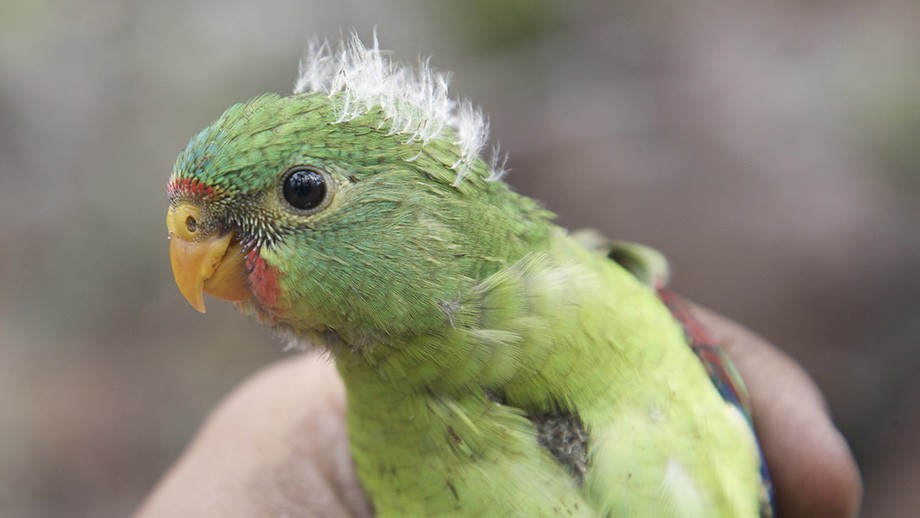Swift parrots migrate 1,000km more during drought
New research into the winter migration of Tasmania's swift parrots has found the population migrates up to 1,000 kilometres further north from their central Victorian habitats during drought years to concentrate on the coast of New South Wales.
Using eight years of data collected by volunteers from BirdLife Australia, researchers for the first time have worked out exactly how far the critically endangered Swift Parrots need to travel to find food after consecutive years of drought.
Lead researcher Dr Debbie Saunders from The Australian National University (ANU) said the findings highlighted the need to protect a network of habitats across their winter range to enable them to adapt to extreme and variable weather conditions.
"Every year the birds migrate north from Tasmania, and search far and wide across south-eastern mainland Australia to find eucalypt nectar sources that will sustain them throughout the winter," said Dr Saunders, from the ANU Fenner School of Environment and Society.
She said the birds return to the same places, although it could be up to seven years between visits, with the number of birds migrating to an area dependent on the variable weather and eucalypt flowering cycles.
"So when Victoria has a prolonged drought, the birds are travelling up to 1,000 kilometres on top of the hundreds of kilometres they have already travelled," she said.
"A number of regions across NSW are really important for the species. The central coast is the drought refuge habitat, and places like the Riverina are where birds go every year."
Dr Saunders said the data from BirdLife volunteers gave researchers an insight into bird populations and their winter migration range on a new scale.
"Without BirdLife Australia's long term volunteer program none of this would be possible. Even a team of researchers can't collect the data of the same scale spanning 20 years," she said.
Dr Saunders and researchers at ANU will use the data to help with conservation efforts under a $1 million project from the New South Wales Government to protect the state's swift parrot population.
"The NSW government funding will be used for habitat protection including fences to weed control, restoration and getting important feed trees back in the ground," Dr Saunders said.
Dr Saunders said the conservation efforts would also benefit 38 other threatened species.
The research was published in the journal Emu - Austral Ornithology.

